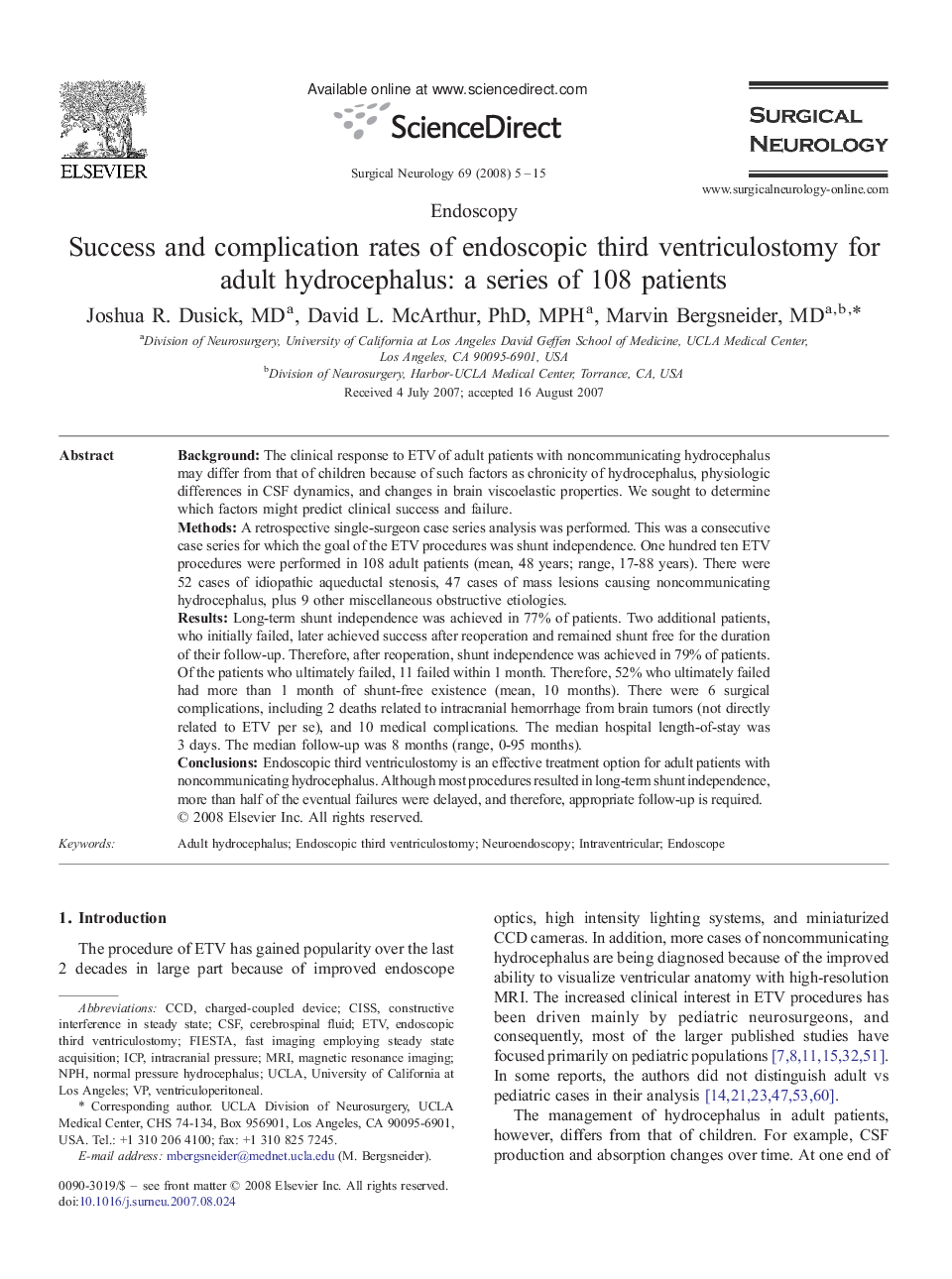| Article ID | Journal | Published Year | Pages | File Type |
|---|---|---|---|---|
| 3093079 | Surgical Neurology | 2008 | 11 Pages |
BackgroundThe clinical response to ETV of adult patients with noncommunicating hydrocephalus may differ from that of children because of such factors as chronicity of hydrocephalus, physiologic differences in CSF dynamics, and changes in brain viscoelastic properties. We sought to determine which factors might predict clinical success and failure.MethodsA retrospective single-surgeon case series analysis was performed. This was a consecutive case series for which the goal of the ETV procedures was shunt independence. One hundred ten ETV procedures were performed in 108 adult patients (mean, 48 years; range, 17-88 years). There were 52 cases of idiopathic aqueductal stenosis, 47 cases of mass lesions causing noncommunicating hydrocephalus, plus 9 other miscellaneous obstructive etiologies.ResultsLong-term shunt independence was achieved in 77% of patients. Two additional patients, who initially failed, later achieved success after reoperation and remained shunt free for the duration of their follow-up. Therefore, after reoperation, shunt independence was achieved in 79% of patients. Of the patients who ultimately failed, 11 failed within 1 month. Therefore, 52% who ultimately failed had more than 1 month of shunt-free existence (mean, 10 months). There were 6 surgical complications, including 2 deaths related to intracranial hemorrhage from brain tumors (not directly related to ETV per se), and 10 medical complications. The median hospital length-of-stay was 3 days. The median follow-up was 8 months (range, 0-95 months).ConclusionsEndoscopic third ventriculostomy is an effective treatment option for adult patients with noncommunicating hydrocephalus. Although most procedures resulted in long-term shunt independence, more than half of the eventual failures were delayed, and therefore, appropriate follow-up is required.
